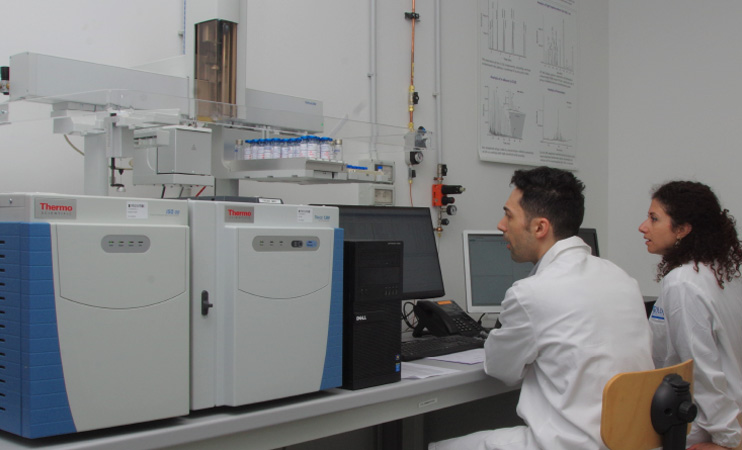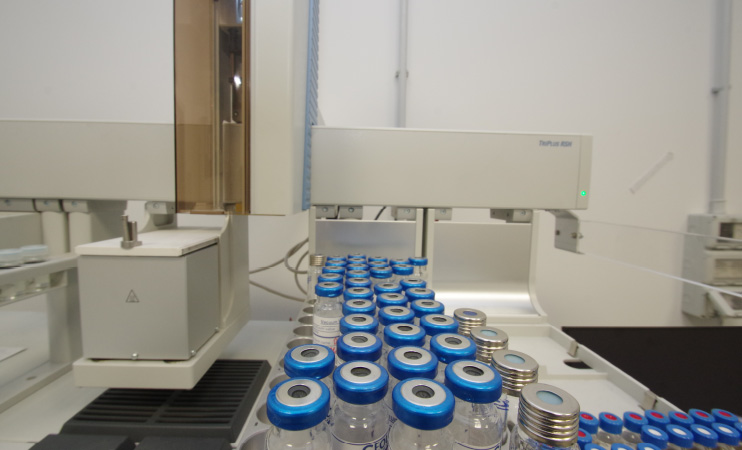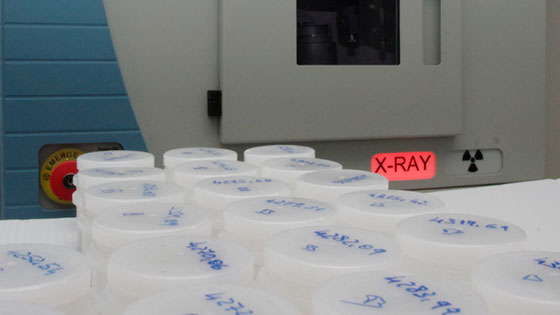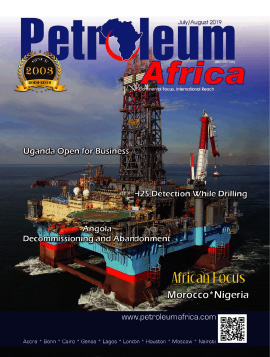PUBLICATIONS
 Use of Reservoir Geochemistry in High Water Cut Production: A Case Study in The Karakuş Field
Use of Reservoir Geochemistry in High Water Cut Production: A Case Study in The Karakuş Field
September 2023, IPETGas
Geochemical-based production allocation methods leverage variations between individual reservoirs (EMs) to segregate mixed oil flows, crucial when budget constraints limit options like multiphase flowmeters. This approach, reliant on GC-fingerprinting and deconvolution algorithms, ensures accurate allocation but necessitates diverse chemical profiles among reservoirs for effectiveness.
To receive this paper, please contact
geolog@geolog.it
 Derivation of rock's geomechanical parameters while drilling by combining surface drilling data, gamma ray data, and machine learning techniques in carbonate formations
Derivation of rock's geomechanical parameters while drilling by combining surface drilling data, gamma ray data, and machine learning techniques in carbonate formations
February 2023, EAGE First Break
This study develops a robust methodology using drilling and well log data, combined with machine learning, to accurately derive geomechanical parameters from 11 wells in Kuwait. It includes an innovative approach—creating a Synthetic Gamma Ray from XRF analysis—to expand its applicability in scenarios where traditional downhole tools aren't viable.
To receive this paper, please contact
geolog@geolog.it
 Risk reduction in the derivation of while-drilling wellbore geomechanical properties by utilization of real-time surface logging and gamma ray data through the application of machine learning techniques to pre-existing data sets
Risk reduction in the derivation of while-drilling wellbore geomechanical properties by utilization of real-time surface logging and gamma ray data through the application of machine learning techniques to pre-existing data sets
June 2023, SPWLA
This work presents a reliable method using surface logging data and well log data to evaluate geomechanical parameters. By employing machine learning algorithms and combining drilling parameters with Gamma Ray, Sonic, and Bulk Density logs, the model successfully predicts geomechanical properties in newly drilled wells, reducing the reliance on Sonic and Density logs and providing a cost-effective.
To receive this paper, please contact
geolog@geolog.it
 Multi-well production allocation via petroleum fingerprinting: a case study in the norwegian sea
Multi-well production allocation via petroleum fingerprinting: a case study in the norwegian sea
June 2023, SPWLA
A successful pilot study in the Norwegian Sea showcases effective petroleum fingerprinting for production allocation in offshore wells. Robust mixing model and GC-MS analysis yield accurate results, aligned with multiphase flowmeter data—a cost-effective approach for production allocation without deferment, even in single-level multiwell production.
To receive this paper, please contact
geolog@geolog.it
 Geomechanics while Drilling: an innovative methodology to derive Geomechanical parameters in unconventional reservoirs using surface logging data, gamma ray and machine learning
Geomechanics while Drilling: an innovative methodology to derive Geomechanical parameters in unconventional reservoirs using surface logging data, gamma ray and machine learning
November 2022
In this work, an innovative methodology is proposed to derive several geomechanical parameters (Young's Modulus, UCS, Poisson's ratio, Bulk Modulus, Shear modulus) and equivalent well logs using only drilling parameters or combine them with gamma-ray data (from well logs or via XRF analysis on cuttings by calculating a Chemical Gamma Ray).
To receive this paper, please contact
geolog@geolog.it
 An original deconvolution approach for oil production allocation based on geochemical fingerprinting
An original deconvolution approach for oil production allocation based on geochemical fingerprinting
November 2022
The paper presents an overview of the most widely employed techniques for production allocation. After highlighting the strength and drawbacks of each methodology, the Geolog approach is proposed. It consists of an improved experimental procedure for GC targeting production allocation and a novel deconvolution algorithm developed with Politecnico of Milan.
To receive this paper, please contact
geolog@geolog.it
 Probabilistic assessment of equivalent fracture aperture constrained on quasi-real‑time drilling mud loss data
Probabilistic assessment of equivalent fracture aperture constrained on quasi-real‑time drilling mud loss data
July 2022, Journal of Petroleum Exploration and Production Technology
Politecnico di Milano and Geolog Technologies developed an approach for the characterization of equivalent fracture apertures based on available mud loss information acquired in quasi-real-time while drilling.
To receive this paper, please contact
geolog@geolog.it
 Integrated Formation Evaluation Using Multiple Geochemical Solutions to Optimize Reservoir Description and Evaluate Production Potential from Multiple Targets in the Northern Delaware Basin
Integrated Formation Evaluation Using Multiple Geochemical Solutions to Optimize Reservoir Description and Evaluate Production Potential from Multiple Targets in the Northern Delaware Basin
June 2022, URTeC, URTeC: 3723283
This paper reports an integrated formation evaluation workflow on a multi-well case study in the Northern Delaware Basin using surface logging and laboratory analyses only. We will present how this approach provided subsurface characterization for enabling key drilling and completion decisions and optimizing future well planning and target selections
To receive this paper, please contact
geolog@geolog.it
 Sensitivity Analysis and Quantification of the Role of Governing Transport Mechanisms and Parameters in a Gas Flow Model for Low-Permeability Porous Media
Sensitivity Analysis and Quantification of the Role of Governing Transport Mechanisms and Parameters in a Gas Flow Model for Low-Permeability Porous Media
April 2022
The scope of the work is identifying a suitable model to represent gas (methane) migration in low-permeability media. This paper analyzed the relative importance of parameters driving gas flow in low-permeability formation. Employing statistical-based approaches, a simple, effective diffusion model embedding major methane flow mechanisms is derived.
To receive this paper, please contact
geolog@geolog.it
 Predict Geomechanical Parameters with Machine Learning Combining Drilling Data and Gamma Ray
Predict Geomechanical Parameters with Machine Learning Combining Drilling Data and Gamma Ray
December, 2021, SPE Middle East Oil & Gas Show, SPE-204688-MS
The paper shows the development of a reliable method for geomechanical parameters evaluation while drilling using surface logging data. It combines ML drilling data, XRF and well log data with machine learning techniques. The paper shows that a model trained with drilling parameters and GR coming from one well can predict the Young Modulus of different wells (same basin)
To download this paper
www.onepetro.org
 Novel Approach to Reservoir Continuity Evaluation Through GC-MS Geochemical Fingerprinting
Novel Approach to Reservoir Continuity Evaluation Through GC-MS Geochemical Fingerprinting
September 2021, 30th International Meeting on Organic Geochemistry, Online Meeting
Placido Franco PhD, Ivo Colombo PhD, Roberto Galimberti PhD,
GeoTech
Assessment of reservoir continuity through GC-fingerprinting is widely recognized to provide reliable results and has proven to be effective in supporting or replacing classical approaches such as those based on pressure data analysis. This paper reports an attempt to extend this reservoir geochemistry approach, normally applied to oil sample analysis, to the fingerprinting of cuttings extracts. Challenges, possible solutions and limitations of such an approach, as well as a case history are reported and discussed thoroughly.
To receive this paper, please contact
geolog@geolog.it
 Carbon Isotopes from Mud Gas: Lab IRMS or Wellsite Laser-Assisted Technologies?
Carbon Isotopes from Mud Gas: Lab IRMS or Wellsite Laser-Assisted Technologies?
September 2019, 29th International Meeting on Organic Geochemistry (IMOG), Gothenburg, Sweden
Bianca Cecconi PhD and Roberto Galimberti PhD,
GeoTech
The objective of the study is to screen differences in carbon isotopic analysis between laboratory GC-IRMS and one of the possible alternative solutions for wellsite deployment, Cavity Ring-Down Spectroscopy (CRDS). Comparison examined advantages and disadvantages of two approaches and technical performances in terms of LoD, precision and accuracy.
To receive this paper, please contact
geolog@geolog.it
 Quantification of Uncertainties of Fracture Permeability via Mud Loss Information and Inverse Stochastic Modeling
Quantification of Uncertainties of Fracture Permeability via Mud Loss Information and Inverse Stochastic Modeling
June 2019, 81st EAGE Annual Conference and Exhibition, London, UK
Alberto Guadagnini Prof., Anna Russian PhD, Monica Riva Prof., Politecnico di Milano, Eliana Russo MSc, Mario Chiaramonte MSc,
GeoTech
Fracture characterization of NFRs plays an important role in hydrocarbon production estimation. Uncertainty propagation from input parameters to model outputs is quantified through a Monte Carlo framework. Stochastic inverse modelling with field data is performed to evaluate posterior probability densities of fracture aperture and to simulate drilling fluid invasion in fractures in quasi-real time during drilling.
To receive this paper, please contact
geolog@geolog.it
 H2S detection while drilling: a new approach
H2S detection while drilling: a new approach
March 2019, 14th Offshore Mediterranean Conference and Exhibition, Ravenna, Italy
Luca Mascheroni MSc,
GeoTech
Oil and gas reserve contamination by acid gas is a growing issue and H2S occurrence is more and more frequent. The use of organic scavengers in drilling mud prevents the application of techniques routinely used for H2S detection. Geolog has set up an innovative methodology to highlight H2S distribution in reservoir, even in presence of these scavengers.
To receive this paper, please contact
geolog@geolog.it
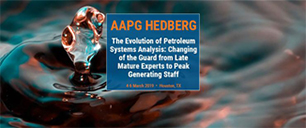 High Resolution Geochemistry at Well Site, a New Emerging Tool
High Resolution Geochemistry at Well Site, a New Emerging Tool
March 2019, AAPG Hedberg: The Evolution of Petroleum Systems Analysis: Changing of the Guard from Late Mature Experts to Peak Generating Staff, Houston, USA
Mario Chiaramonte MSc, Roberto Galimberti PhD,
GeoTech
The recent impressive improvements in analytical chemistry, due on one side to the growing needs of environmental monitoring and on the other to fast developments in nanotechnologies, made possible to move part of geochemical lab activities to wellsite. New portable and more robust instruments, able treplace bulky and complex instruments used in the labs, have been adopted in mud logging units, to introduce geochemistry at well site. This trend is still ongoing and other analytical techniques will be moved soon, offering new opportunities to get in quasi-real time additional high value data, matching lab quality standards.
To receive this paper, please contact
geolog@geolog.it
